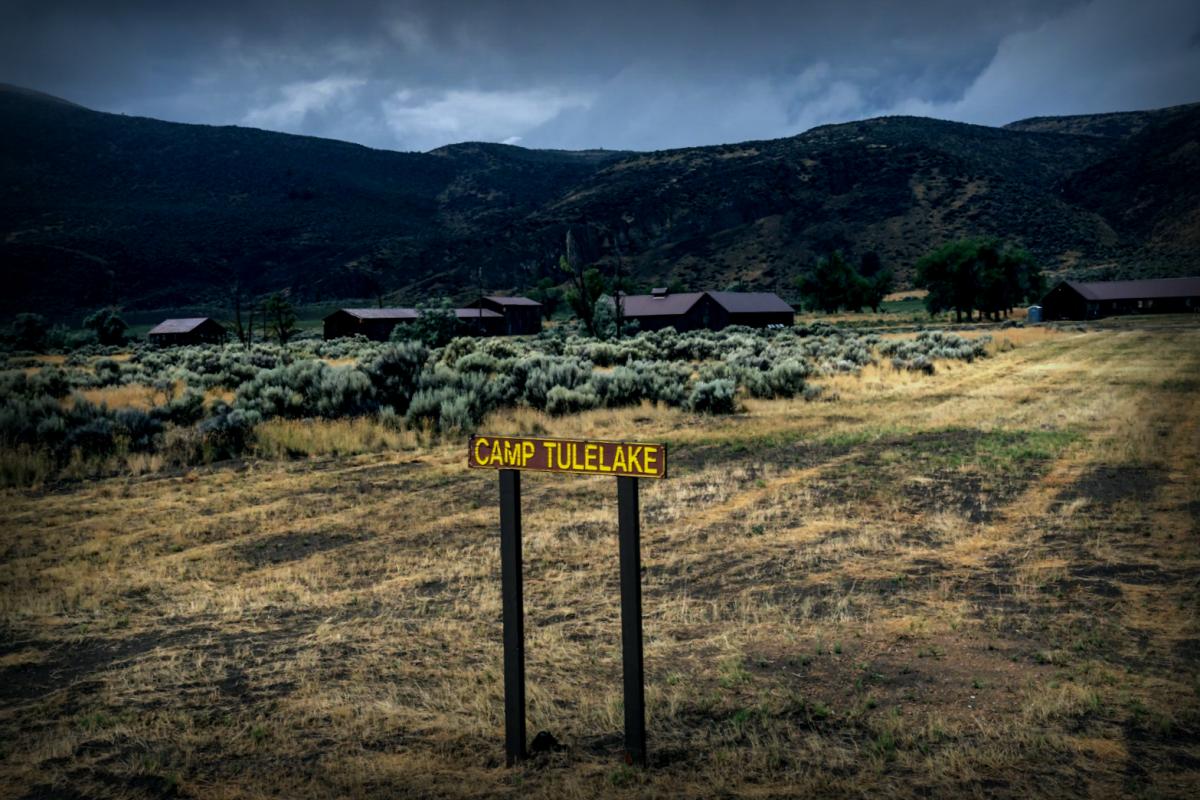FORT BLISS, Texas – Many Japanese Americans are reminded of their ancestors’ painful internment history as they learn about the Trump administration’s latest immigrant detention facility situated at Fort Bliss.
According to officials from Homeland Security, the drastic deportation initiatives of President Donald Trump necessitate a rise in detention centers to manage the influx between deportees and those merely taken into custody. This has resulted in constructing the nation’s largest immigrant detention center right at Fort Bliss in El Paso, Texas, with assistance from the military and private contractors.
However, figures connected to Japanese American history voice sharp criticism of Fort Bliss’s renewed use, expressing their discontent over the idea of using military installations for immigrant detention.
Stay informed every morning by getting essential news directly in your inbox!
Historian Brian Niiya, content director at Densho, a nonprofit dedicated to preserving the stories of Japanese American internment, depicted Fort Bliss as an essential part of the U.S. internment strategy.
Niiya’s personal connection to this history runs deep; his grandfather, a Japanese newspaper editor, was detained immediately after Japan attacked Pearl Harbor on December 7, 1941, ending up in several different internment camps over the following years.
“Examining the past helps shed light on present issues and possibly forecast what might unfold next,” he reflected.
Detaining the ‘worst of the worst’: DHS’s Justification
Locally referred to as Camp East Montana, the detention facility at Fort Bliss resembles a vast canvas tent city that emerges from the desert flatness. It’s strategically placed within the military base but can easily be spotted from El Paso’s vibrant Montana Avenue, situated near a building that is home to U.S. Immigration and Customs Enforcement (ICE).
This camp has been erected at a staggering cost of $1.2 billion and can hold up to 5,000 detainees. Reports from around mid-August suggested that approximately 1,000 men were currently being held there, as noted by U.S. Representative Veronica Escobar, an El Paso Democrat with Fort Bliss in her district.
Tricia McLaughlin from the Department of Homeland Security (DHS) dismissed parallels drawn between current detention centers and the internment camps of World War II, labeling such comparisons as “crazy and lazy.”
According to her, “ICE targets primarily the most dangerous individuals – murderers, gang members, pedophiles, and rapists,” she stated.
However, a review of government statistics by the Cato Institute in June uncovered that ICE arrests were predominantly of non-criminals, at four times the rate of those with existing convictions. Current data from ICE indicates that about 45% of the approximately 59,000 detainees in custody as of mid-August had no prior criminal offenses.
Mike Ishii, the executive director and co-founder of the immigration rights group Tsuru for Solidarity, believes that the current administration echoes the past in its methods, such as forcibly removing individuals from homes and workplaces without adequate reasons.

Ishii, whose family faced detention at the Minidoka concentration camp in Idaho, remarked, “These times are notably daunting for many, just as they were back in 1941.”
No Evidence of Wrongdoing Found
Back in WWII, according to Densho records, Fort Bliss became a location for the internment of people deemed as “alien threats” within a detention camp encased by double barbed wires.
Even after the U.S. involvement in the wars against Germany and Italy, smaller groups of immigrants from these nations found themselves sent to this location.
Records from the nonprofit Ireizō indicate that at least 113 first-generation Japanese Americans were transported here before being moved to various detention sites nationwide.
Many of these individuals were immigrants, paving the way for the subsequent internment of over 125,000 Japanese Americans across the nation, the majority of whom were U.S. citizens.
“Nothing substantiated any wrongdoing against them except for their classification as ‘enemy aliens’,” Karen Umemoto from UCLA’s Asian American Studies Center remarked.
Historical Context: The 1798 Alien Enemies Act
After the Pearl Harbor incident, the American government classified Japanese individuals and immigrants as potential hazards, leading to President Franklin Delano Roosevelt invoking the 1798 Alien Enemies Act, giving authorities the brusque power to detain these people.
This year, Trump also relied on this old law to categorize specific immigrants as “alien enemies,” prompting rapid deportations. Certain removals were hindered due to Supreme Court interventions.
Furthermore, the Biden administration had also utilized Fort Bliss as a refuge for unaccompanied children crossing the border.
Within this context, the temporary facility administered by private contractors at Fort Bliss during Biden’s term aimed to assist children in processing admissions and was not designed for deportation purposes. Nonetheless, survivors and descendants of the original internees held a protest at the location in 2021 that highlighted inadequate conditions, which raised safety and management concerns later published in a federal report in 2022.
When questioned regarding Fort Bliss’s past role in internment, a Pentagon spokesperson redirected inquiries to a media briefing alongside an Aug. 7 newspaper piece, stating that military management insists their efforts will establish the largest federal detention facility ever, targeting the deportation of undocumented aliens.
Extracting Lessons from the Past
On August 21, around noon, the Fort Bliss detention area buzzed with the movement of both construction and passenger vehicles amidst a picturesque sky filled with fluffy clouds.
Despite the setting, the entrance to the facility was void of meaningful signage, merely displaying warnings on plywood advising: “Searches of all vehicles will be conducted. Photography, cell phones, and video equipment are prohibited.”
“We continually remind ourselves that understanding history is crucial in preventing its recurrence, but perhaps we can no longer confidently declare that,” commented historian Niiya.
This piece initially appeared on USA TODAY: Army base used for WWII Japanese internment now nation’s largest ICE detention center


















